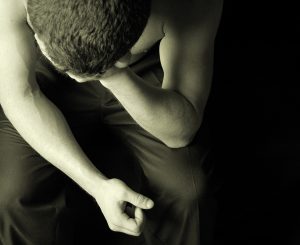One State’s Temporary Gun Removal Law Shows Promise in Preventing Suicides

A Connecticut law enacted in 1999 to allow police to temporarily remove guns from people with the potential to cause violence to themselves or others likely prevented dozens of suicides, according to a study available online by researchers from Duke University, Yale University, and the University of Connecticut.
In their review of 762 cases in which guns were removed, the authors calculate that, for every 10 to 20 instances of temporary gun seizures, 1 suicide was prevented.
“Ten to 20 gun removals to save 1 life: Is that high or is that low?” asks lead author Jeffrey Swanson, PhD, a Duke professor in the Division of Psychiatry and Behavioral Sciences. “That may be for the policymakers to decide. But we’d like to put this information in the hands of the policymakers so they know what’s hanging in the balance of risk and rights when it comes to preventing gun violence.”
In the study, which is forthcoming in Law and Contemporary Problems, researchers used court records, interviews, public health files, vital records, and other sources to track the lives of people subject to temporary gun removal. The researchers applied US population–level data on suicides, suicide attempts, and gun ownership to estimate how many deaths were potentially averted.
The Connecticut law was drafted after a 1998 mass shooting at offices for the state lottery. Initially driven by concerns about distraught people committing violence against others, the bill is more often used by family members and law enforcement concerned about people who might harm themselves.
The policy could help identify people who may be temporarily at an increased risk of violence but do not necessarily have a history of violence, involuntary commitment, or a criminal record that would raise flags through point-of-sale background checks, Swanson says.
“It’s pretty easy to get a gun these days without going through a background check,” Swanson says. “That’s why this kind of risk-based, temporary gun removal could be important. It doesn’t depend on just stopping someone from buying a new gun. If they already have 10 at home, that might not do much good.”
Among the 762 interventions, 21 of the people involved died from suicide—a proportion 40 times higher than the suicide rate of the general population. All of the gun-related suicides occurred after the person was once again eligible to buy a gun or reclaim weapons that had been held by authorities.
According to national data, approximately 90% of people attempting suicide survive, but the results are almost always fatal for those who use firearms, Swanson said.
“In our study, we asked, ‘What if the guns had not been taken away? How many more people would have died?’” he said. “We don't know that for sure. But using information that we have from other studies about the means used in suicide in the US population and the connections between gun ownership and suicide, we can estimate with some confidence that the gun-removal policy in Connecticut did save many lives. In effect, it offered a second chance at life for people in deep despair and even a path to recovery when they got help as a result.”